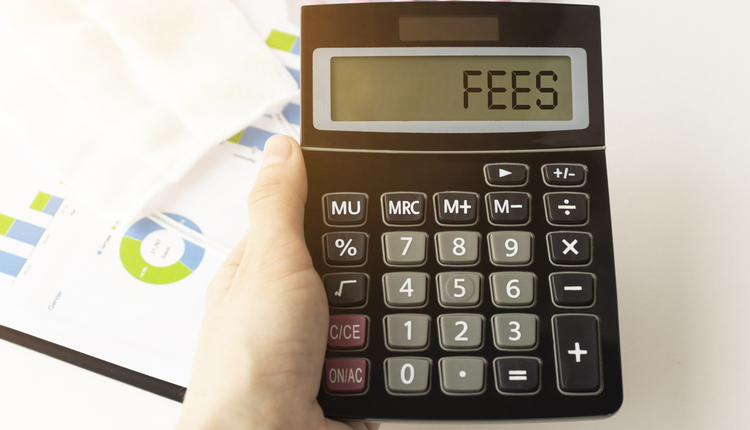The process of analyzing high-volume shipper distribution patterns, identifying opportunities to save money and, in many cases, reduce transit times is often called mode (or modal) optimization (MO). Part of the MO process includes identifying routing errors and opportunities.
Once identified, the next step is to quantify the opportunity. How much money can be saved? Is there any downside to transit times? Is your enabling technology capable of making the change via “least cost routing” logic or by instituting business rules? Do you need to involve the sales or marketing departments in order to make the change?
Armed with this data, you can now put your plan into action and optimize your carrier mix — which should include the USPS and may include regional carriers or parcel consolidators, as well.
A Look at Some Common Mistakes
1. The most common and costly mistake is shipping Ground at the one-pound rate where ounce-based options exist. Savings per package are measured in dollars, not pennies. It is important to understand that one-pound shipments in these situations are either under or over a pound. If the shipment is over that weight by even .0002 pounds (which, for reference, truly is lighter than a feather), it will rate at two pounds. If you are shipping via the USPS, you may want to consider First-Class Package Services (FCPS), which is ounce-based.
2. Shippers often fail to consider dimensions in best way routing. For example, it’s common for shippers to use USPS Priority Mail (PM) Flat Rate or PM Regional Flat Rate even when PM Cubic is less expensive, or the opposite when PM weight and zone is less. Shippers often also fail to take into account the variance in their carrier contracts’ DIM factors, along with rate concessions and minimum charge impacts. All of these items need to be considered in the routing logic.
3. Are you using an Express service when USPS PM or UPS/FedEx Ground, a regional carrier, or expedited consolidator can get it there in time? A simple service level usage report broken down by zone can clearly show the opportunity to save.
4. One of the biggest obstacles in putting ideas and opportunities into play is not having enabling technology that supports multiple carriers, best way routing, and business rules. Your technology needs to be robust enough to include carrier ancillary charges like Delivery Area, Residential, and Additional Handling Surcharges (DAS, RSC, AHS), fuel surcharges, and DIM relief.
5. Failure to leverage competition is another big mistake shippers often make, and as we all know, complacency (comfort in the status quo) is an expensive mistake. What to do instead?
a. We recommend a regular cadence of opportunities for the non-incumbent carrier, along with shifting a portion of the spend to alternative carriers and consolidators, be offered every few years, or sooner if market dynamics demand.
b. Change carriers when it is in your best interest to do so. While it will be painful, the rewards will pay off over many years since the carriers understand you mean business and are legitimately offering them an opportunity, not just using them to get better pricing from the incumbent.
c. Include parcel consolidators. This will potentially pressure FedEx SmartPost and UPS SurePost to lower rates, and some consolidators also provide faster transit times.
d. Expedited extreme consolidator options can match USPS PM two- to-three day delivery and outperform FCPS in many lanes for less money and faster delivery.
e. These MO opportunities can save 20% to 40% with equal or faster transits.
6. Failure to learn from others is one mistake that’s not so easily quantified, but it’s a big one. Long ago, I coined the phrase “learning from your mailbox.” Over the course of my career, I have learned so much from others, and I’ve come to realize that the good, the bad, and the ugly all tell a story. I saw an example of this first-hand recently. I noticed that my Dollar Shave Club monthly subscription changed their packaging from a padded envelope to small box and now have switched to a USPS Flat Envelope rate. Granted, I’m sure it took some extreme knowledge of the USPS rules to design a package insert that allows for uniform thickness and two-way flexibility, but the savings here likely exceed 50%. There are hundreds of examples like this; why not reach out to an industry expert to see if a magic solution might help your company save?
7. Paying too much for the service you currently use is one error that is sure to make shippers cringe. Examples here include:
a. Not optimizing your current carrier contract by using third-party expert help.
b. Not auditing your carrier for their guaranteed service (failures).
c. Paying over list prices. For example, we have seen dozens of clients paying a dollar or more for USPS PM Cubic, and nearly all didn’t know that the package routed Cubic.
d. Not seeking contractual relief from the USPS when your volume is high enough.
8. Staging shipments by processing outer zones first. This is a pretty specialized opportunity for subscription based on other repetitive business models. It can include using some expedited services to nominalize delivery receipt across the country, so all clients get their products on the same day.
9. Failing to leverage USPS for US territories (e.g. Guam and Puerto Rico), Alaska, and Hawaii. These will rate like a domestic Zone 8 fee and the savings are dramatic when compared to UPS or FedEx.
If you are like most shippers, you’re likely making at least one of these mistakes. As we wrap up 2019, be sure to take the time to identify, quantify, and optimize your data, which will help your shipping operation succeed in 2020 and beyond.
Gordon Glazer, CMDSM, CMDSS, MDP, MDC is a Senior Consultant, USPS Specialist at Shipware LLC, an innovative parcel audit and consulting firm that helps volume parcel shippers reduce shipping costs 10%-30%. Gordon is a postal industry veteran with 32 years of experience and is a sought-after speaker and industry thought leader. He welcomes your questions and comments and can be reached at 858.724.0457 or gordon@shipware.com. Join him at 8 AM on Wednesday, October 30 at the PARCEL Forum, where he’ll be presenting his session, “Top 10 Mistakes You're Making Today: Install USPS to Save 30%.”
This article originally appeared in the September/October, 2019 issue of PARCEL.


















